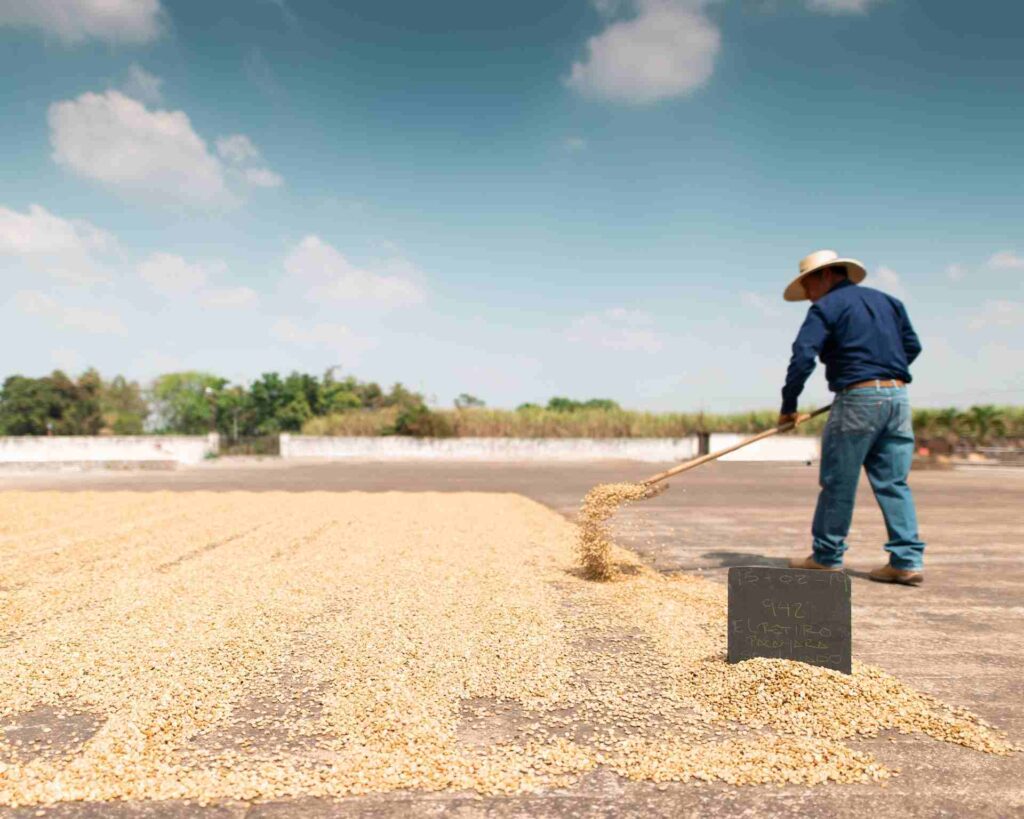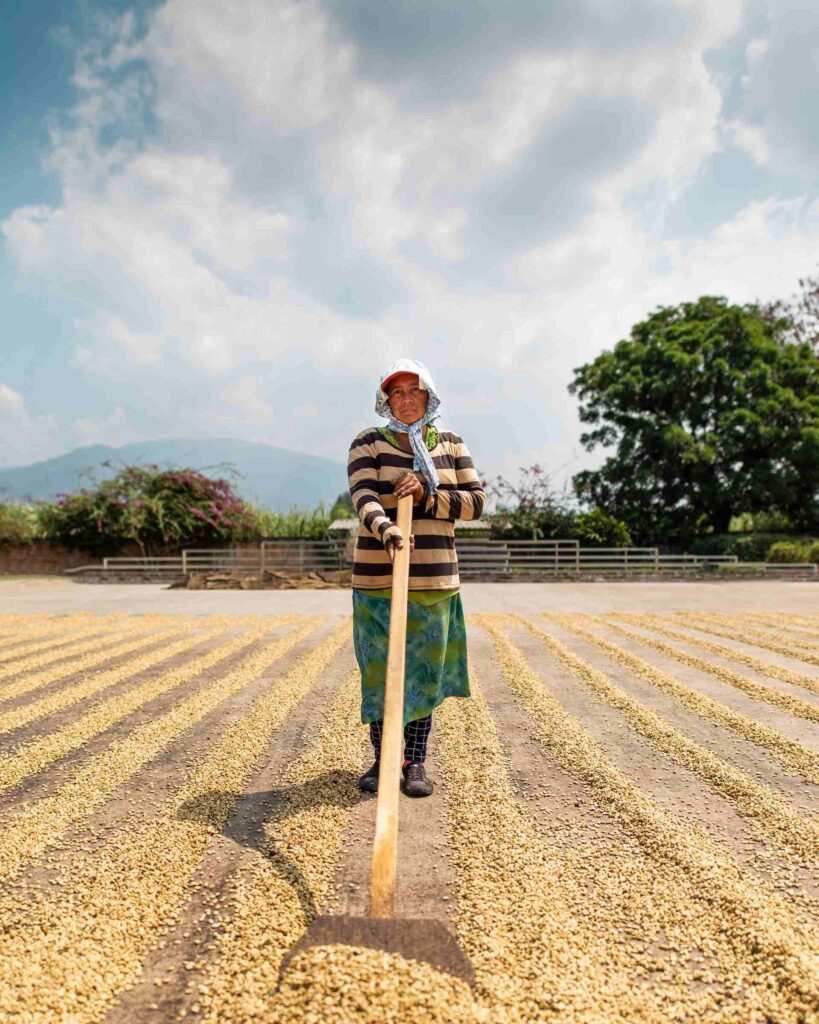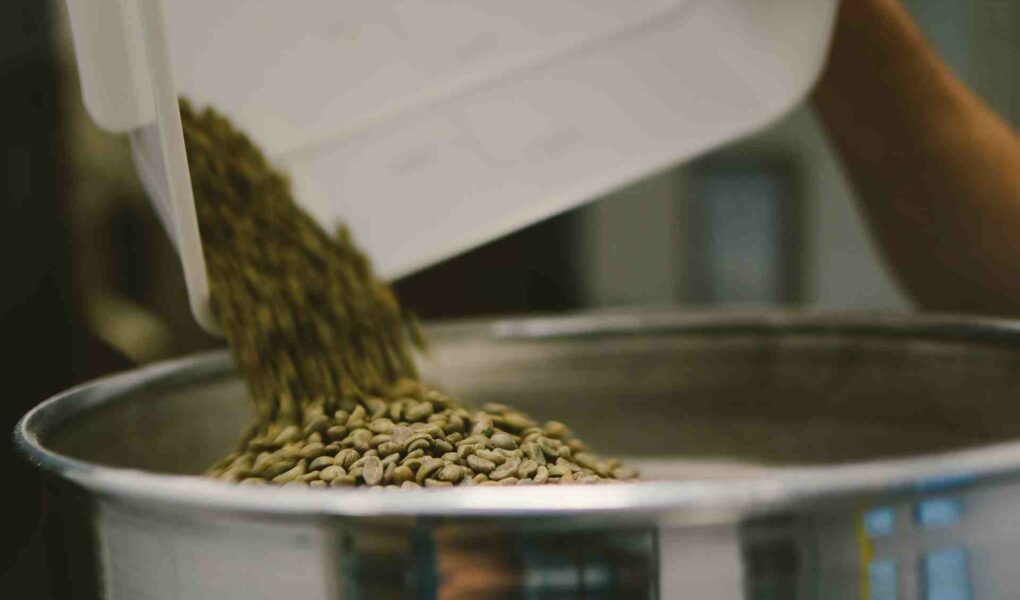In a world where coffee is a major part of a person’s day and caffeine’s effects are both sought after and sometimes avoided, the popularity of decaffeinated coffee has carved a special niche. It brings the comfort of sipping a cup of Joe without the rush of caffeine-induced jitters. But have you ever wondered about the magic behind this process? How does coffee become decaf? How does coffee transform from a stimulating beverage to a mellow, caffeine-reduced one?
Whether it’s due to medical reasons or the fact you love coffee so much you want to drink it before bed, decaf coffee certainly has its place in the coffee world. In this article, we will be taking a look at the world of decaffeination, uncovering the science, methods, and crucial stages that play a role in creating your favorite cup of decaf.
Be sure to check out these best decaf coffees to buy too!
How Does Coffee Become Decaf: Key Stages in the Decaffeination Process

Harvesting Quality Beans
At the heart of exceptional decaffeinated coffee lies the crucial step of selecting the right coffee beans. The journey toward crafting decaf excellence begins with identifying high-quality beans that possess the intrinsic characteristics that will shine even after caffeine extraction. The meticulous process of bean selection lays the foundation for the flavors and aromatic notes that decaf coffee drinkers cherish.
Soaking in Solvent Solutions
Two distinct methods dominate the decaffeination landscape: the solvent-based method and the Swiss Water Process. In the solvent-based approach, coffee beans are immersed in chemical solvents such as ethyl acetate or methylene chloride. These solvents facilitate the extraction of caffeine molecules, leaving behind the desired flavors and aromas intact.
On the other hand, the Swiss Water Process takes a more natural route. This method employs water as the medium to extract caffeine, without compromising the beans’ essential characteristics. This approach maintains the integrity of the flavor profile, producing a decaf that remains true to its origins.
Swelling the Beans
Before caffeine extraction begins, the beans undergo a crucial step of hydration. By introducing moisture, the beans swell and expand, creating tiny openings within their structure. This swelling phenomenon paves the way for more effective caffeine extraction in the subsequent stages of the process.
Decaffeination Process
The core of the decaffeination process involves the circulation of either solvents or water through the hydrated beans. As the solvents or water interact with the beans, they gradually extract the caffeine molecules. This process is often conducted in cycles, allowing for the continuous removal of caffeine until the desired level is achieved. The careful orchestration of these cycles ensures that caffeine is selectively extracted while preserving the compounds responsible for the coffee’s flavor and aroma.
Drying and Steam Treatment
Following the decaffeination process, the beans need to undergo drying to eliminate any residual solvents or water content. Once dried, the beans are introduced to a steam treatment, a revitalizing step that rejuvenates their flavors. This meticulous treatment ensures that the beans regain the character that might have been temporarily subdued during the decaffeination process.
Reabsorption of Flavors
As the decaffeination journey nears its completion, the beans embark on the final phase: reabsorption of flavors. During this stage, the beans recapture the natural flavors that might have been temporarily lost during the process. This reabsorption process aims to restore the beans’ original taste profile, culminating in a decaffeinated coffee that boasts the authentic flavors that coffee drinkers long for.
Benefits of Decaffeination

There are many pros and cons of decaf coffee, however, the process of decaffeination offers a number of advantages that cater to both the taste and health-conscious preferences of coffee enthusiasts.
- Caffeine Reduction Without Sacrificing Taste: The paramount benefit of decaffeination lies in its ability to reduce caffeine content while preserving the authentic flavors of coffee. Decaf lovers can indulge in the same rich taste without the stimulant effects, making it an attractive choice for those seeking balance.
- Ideal for Sensitivity and Evening Enjoyment: Decaf is a haven for individuals sensitive to caffeine’s stimulating effects. It offers a gentle option that won’t disrupt sleep patterns or contribute to jitters. Moreover, it provides an inviting choice for those who enjoy a cup of coffee in the evening without the risk of sleep disturbances.
- Health-Conscious Choice: Embracing decaffeination aligns with a health-conscious lifestyle. By reducing caffeine intake, individuals can manage their overall caffeine consumption while still relishing the coffee experience. It’s a mindful choice for those looking to embrace moderation without forfeiting their daily dose of delight. (Read more: is decaf coffee bad for you).
The Final Sip
The journey of how coffee becomes decaf is a meticulous process that seamlessly mixes science and art. From the careful selection of high-quality beans to the delicate reabsorption of flavors, every step is a testament to the dedication that goes into crafting a cup of decaffeinated perfection. Whether you’re seeking a gentler caffeine experience, an evening cup, or a mindful choice for your health, decaf opens up new possibilities for your coffee-drinking experience.
You can also learn about why decaf it different.




